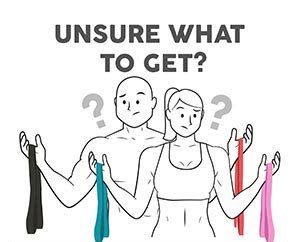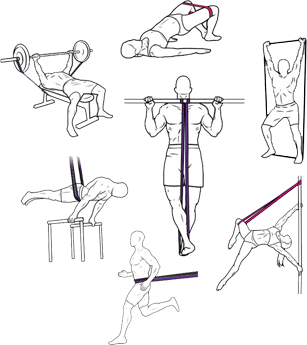Hey all and welcome back to chin ups with Joel. This is article builds on the previous discussion we’ve had about building the requisite strength to dominate your chin-ups and pull-ups. What do I mean? I mean today we get a look into muscle ups - the bigger, better and flashier brother of the chin up.
Muscle ups aren't as hard to understand as people think. Some treat them like a mystical unicorn that they may never encounter, but an intelligent approach pretty quickly gets you on the horned horse and repping them out.
If you want to be a unicorn-riding, muscle up master there are three main things to consider to get yourself there:
- A strong and/or fast pull up/chin up.
- A strong transition from the top of the chin up into the bottom of the dip.
- A strong dip.

There are also another couple of things we need to make sure of, dependent on whether we are looking to muscle up on rings or the bar.
If we are on the rings, it would be good to ensure:
- You have learned to grip the bar with a decent false grip to help give yourself leverage over the rings
- Sufficient shoulder extension and scapular retraction strength so you are able to engage the correct muscle groups necessary throughout your range of motion.
- You are able to stabilize the gymnastics rings as we press up into a straight-arm dip.
Conversely, on the bar, it is helpful having:
- Good timing (especially early on). Your body has to in one choreographed movement so it’s imperative that each body part does their role in synchrony.
- Strong shoulder rotators to help stabilize your joints, withstand the force and propel you upward.
Now that we all know these things, let's dive in and understand why I say this.
A strong and fast chin up is by far the most important element in developing a quality muscle up, regardless of the type you are aiming for first. Elite gymnasts and calisthenics athletes are often strong and explosive enough to finish a chin up at their hip height. Think about this for a second. If you can chin up to your hips, a transition and dip aren't even necessary. You are already there. So if you would like a muscle up, you better get to work on your chin ups, pronto. Make your weighted chin ups heavier and work on creating the speed relative to the weight you have attached to you. It is important to focus on having a weight you can still move somewhat quickly, or we will not be developing speed as much as we would like. It is for this very reason that doing a few very low rep, unweighted sets focused purely on raw speed is also very helpful. Speed is its own attribute, and while speed (velocity) can be created by moving heavier weights at the same speed, it can also be upped by moving the same weight faster, so don't forget to focus on both.
My two favorite ways to focus on developing speed are actually relatively simple.
The first is this: Set a bar or pair of rings so that you are at full stretch and your feet are still (just) in contact with the ground. Do your chin up as quickly as possible from this dead stop position. Keep your reps and sets limited to those where you can continue to pull as fast as possible (less than 5 tends to be good- speed only improves by moving fast. Training at slow speeds actually slows you down, go figure).
The other way- do your sets and reps with a resistance band anchored to the ground. This creates an accommodating resistance, making the final portion of the chin up harder. If you practice pull ups like this for a while and remove the pullup band you will notice a faster finish to your chin ups than ever before… exactly what you need to drive those fast and explosive pull-ups that make your life easier when doing muscle ups!
Resistance bands also help accelerate progress by increasing the number of reps you can do before burnout, which is arguably what makes the greatest advancements in strength gains. Imagine doing one set of pull-ups until exhaustion and then having to wait a minute or two before you perform your next set because you're tired. Now fast track this by adding in a pullup assist band to squeeze out another set or two without resting. In the end, you'll increase the intensity and amount of 'time under tension' your muscles are challenged with during your workout. This dramatically accelerates workout efficiency and progress.
Using resistance bands for muscles ups is widely known to help you focus on correct form, mastering your transition from a pullup to a straight bar dip, and increasing the quality and quantity of your muscle up reps.
Want to try resistance bands for muscle-ups?
Now, if you are reading articles on muscle ups, it is likely you don't have an amazingly strong or fast chin up JUST YET. If you can't pull up to your hips, then transitions and dip strength have to come into play. The weaker our pull is, the greater our reliance on our strength here.
The transition, stated simply as it can be, is pure shoulder extension on the rings. On the bars, the transition is a mixture of pulling strength and internal rotation. The transition begins at the 'top' of the pull-up and ends at the bottom of the dip position in both cases. For those focusing on rings, retracting the scapula and extending through the shoulder is essential to nailing the transition.
How are ring muscle ups and bar muscle ups different?
Great question! The bar doesn't make shoulder extension as advantageous as shoulder rotation, so (especially early on) people tend to take the easy route. This isn't an issue UNLESS your rotator cuff and scapula aren't ready for them yet, so take heed.

What I mean to say here is that, while people are different, most will find a ring muscle up easier to get to than a bar muscle up, especially if you want strict form. A ring muscle up doesn’t need the same height as a bar muscle up to successfully transition, meaning a weaker and less explosive chin up can get you through a ring muscle up, where bar muscle ups will either need more strength or a better kip [swining of the legs to gain momentum] to get through. Note that we typically recommend striving for strict muscle-ups, without swinging the legs, if possible.

The only thing that slows people down with the ring muscle up is the false grip.
So, which should you start with? If false grip moves slowly and is super painful, work on learning the technique needed for bar muscle ups. If you are a heavier individual and your pull-up strides improve slowly, look at spending time on the false grip so that you can nail the rings first.
The final piece of the puzzle is dip strength. For many, this is the easy portion of the muscle up, especially on bars. On rings, the instability the rings create complicates things somewhat, but as long as you are practicing dips and weighted push ups, this will not tend to bother you. Unlike the pull ups, the speed of the dip does not matter provided you have the strength to complete it. We recommend training your straight bar dips (as opposed to parallel bar dips to help simulate an actual muscle-up)

So, if these three things are good and you can put them together cleanly, your muscle up is good to go at the most basic of levels.
This is where the secondary considerations come in.
Muscle ups ask for the body to deal with reasonable amounts of load in places we may not be the strongest already. When a body part deals with more force than it can manage in the moment, injury occurs. With regards to ring muscle ups, we often see people injure shoulders because they aren't able to manage the shoulder extension or scapular demands associated with the movement. Conversely, with bar muscle ups, the additional weight in shoulder internal rotation generally creates upset shoulders if they aren't prepared and capable of dealing with this force.
This doesn't have to be a major concern in many cases, it is just worth making sure these elements are not overlooked and strengthened along with our dips, transitions and chin ups. If our training is intelligent, we can generally get a lot of these secondary considerations in along with our main work.
As far as injury risks and secondary considerations are concerned, a lot of these can be avoided by working diligently on creating an explosive chin up and a strong and controlled transition.
Additional work can be done to strengthen the rotators and stabilise the scapula, but often, direct work will get the job done without too much issue. The explosive chin up takes away a lot of the extra force created in the transition and reduces the risk of injury in this way. The issue in relying on this is that your chin up will slow as you tire, exposing you to the need to transition again.
This then means if we want to push ourselves for reps, our transitions have to be strong without exception. To ensure the transition is strong, on bars or rings, we need to practice controlled negatives on our apparatus of choice. For this we begin above the rings or bar and slowly lower ourselves down into a hanging position. In both cases, our lowering portion of the rep should be slow and controlled enough to stop at any point in the descension if commanded to do so.
If you cannot do this with your entire bodyweight yet, set your rings or bar at a height that allows you to lower and/or transition with some of your weight in your feet. We find that practicing your muscle-up negatives on the lower lying parallel bars provides an excellent bodyweight training environment to help control your movement. While transitioning, ensure your elbows angle back and stay close to your sides, rather than coming away from the body.
In addition it is worth working on the rotation and extension in your shoulders, allow with elbow flexion. If you are working up to a muscle up on the rings, it is necessary to work on your false grip. For shoulder rotation, Cuban rotations are often a good option. Building these up in weight over time will ensure a lower injury risk due to shoulder rotation. As for shoulder extension, doing paused dips with full range of motion and added range of motion push ups (ie on parallettes) will ensure you can control the ranges you enter into with the transition, as we are mimicking the deepest part of the dip in these movements.
As for elbow flexion, I enjoy giving my clients tiger bend push ups. This is because it creates the necessary elbow flexion for muscle ups and feels similar to the transition of the muscle up. Being a lighter move, we can also get in lots of repetitions to work into the connective tissues which will need strengthening as we make our way towards the muscle up and beyond.
False grip is developed (unfortunately) by working it directly.

Starting with false grip rows, with time we can progress into hangs and eventually chin ups. From here, we then likely have everything we need in terms of false grip for the muscle up, and we will have bridged any gaps we could have that might cause us issues.






0 Comments
Leave a Comment